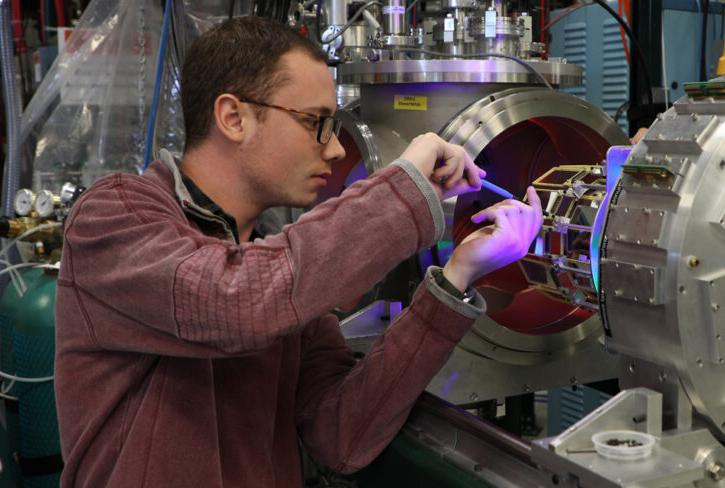
Neutron-transfer reactions with radioactive-ion beams (RIBs) probe the single-neutron components of the nuclear wave function, which are needed to deduce the direct semi-direct (DSD) component of neutron capture. With N=50, 84Se is near the (weak) r-process path of nucleosynthesis, where unknown neutron-capture cross sections (expected to be dominated by DSD capture) can affect calculations of abundances. With (d,p) reactions, spectroscopic factors can be deduced by comparing experimental differential cross sections to those calculated using nuclear reaction theory. However, deduced spectroscopic factors are heavily dependent on the radius and diffuseness parameters chosen to model the single-particle bound-state potential. Using a combined method with low- and high-energy RIBs, both a peripheral and more central probe of the nucleus can constrain the single-particle asymptotic normalization coefficient (spANC) – reducing the uncertainties on the extracted spectroscopic factors. Using this method for the first time with a heavy, neutron-rich RIB, the spectroscopic factors
of low-lying states in 85Se are studied through the 84Se(d,p) reaction. The high-energy measurement at 45 MeV/u was performed at the National Superconducting Cyclotron Laboratory, where the Oak Ridge Rutgers University Barrel Array (ORRUBA) and the SIlicon Detector ARray (SIDAR) were used to detect reaction protons in coincidence with heavy-ion recoils analyzed by the S800 spectrograph. The low-energy (4.5 MeV/u) measurement was previously measured by Thomas et al [Tho07] at the
Holifield Radioactive Ion Beam Facility, where spectroscopic factors were extracted without a constraint on the bound-state parameters. With the combined analysis of the low- and high-energy measurements, single-particle ANCs were constrained for the 5/2+ ground state and 1/2+ first excited state, and spectroscopic factors were deduced to be 0.28±0.05 and 0.26±0.07 for these states, respectively. The deduced spectroscopic
factors were then used as input for DSD neutron-capture cross section calculations at astrophysical energies.
The study of N≈50 isotopes is then continued with the N=48 isotope 80Ge. Preparation for the priority-one approved measurement of 80Ge(d,p) at 45 MeV/u is discussed, which is to be directly compared to a previous measurement at 3.875 MeV/u by Ahn et al [Ahn19] through the combined method. The analysis of the low energy data for a range of bound-state geometries is also presented.
Looking to the future, work to prepare for the Facility for Rare Isotope Beams (FRIB, currently under construction) is presented, including a new design for the Gamma-array – ORRUBA: Dual Detectors for Experimental Structure Studies (GODDESS) setup. This will provide the opportunity to measure spectroscopic factors even further from stability.


